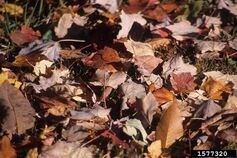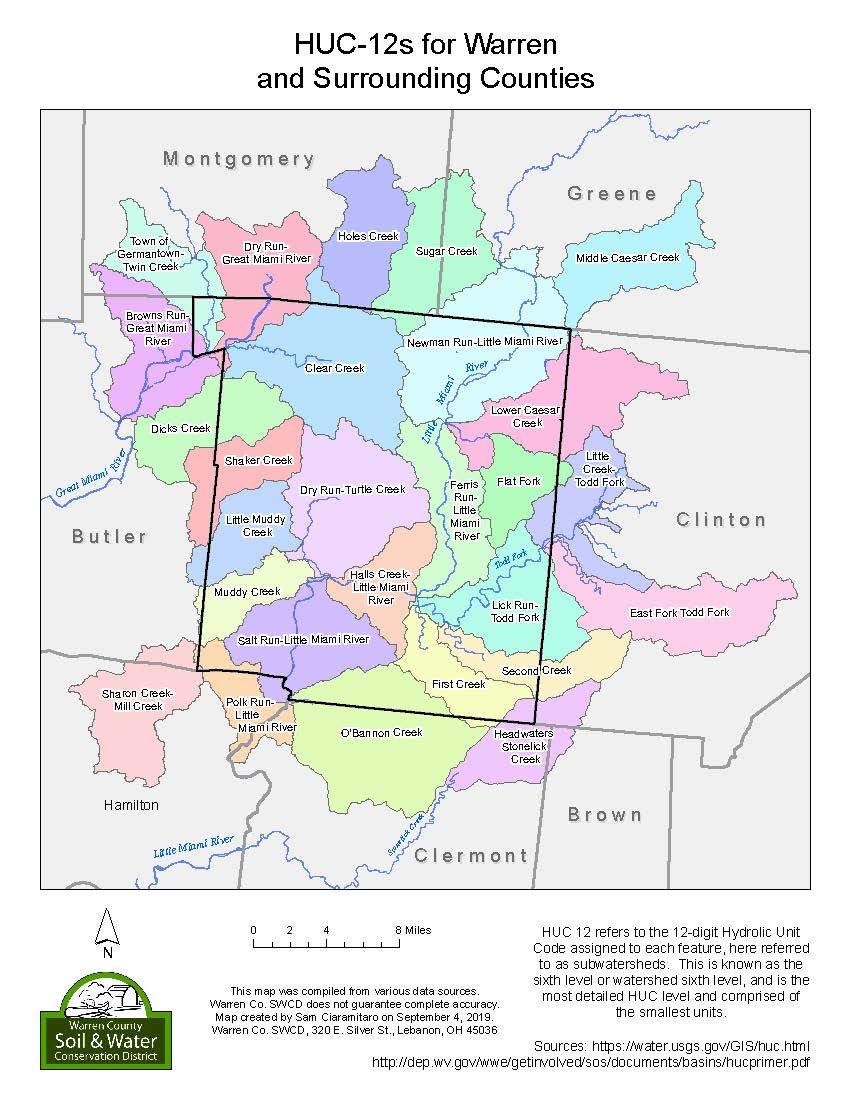|
Photo Credit: Gerald Holmes, Strawberry Center, Cal Poly San Luis Obispo, Bugwood.org Fall is upon us! The beauty of the leaves is one of the favorite sights of the season. Once the leaves fall from their trees, a new chore can be added to the list – leaf raking! This can be back-breaking work if done by hand. According to the U.S. Environmental Protection Agency in 2017, leaves and other yard debris account for more than 13 percent of the nation’s solid waste—a whopping 35 million tons a year! Creatively and judiciously managing leaves by mulch mowing can save time and money in your fertilization effort, save your back, and keep leaves out of the landfill. Here are some simple guidelines and strategies to help you mulch mow your leaves.
Mulch mowing is just what it sounds like - chopping leaves into small pieces until it turns into a mulch like material that is returned to the lawn. Leaf debris naturally composts, allowing nutrients to return to the soil. Successfully mulching leaves into the lawn requires frequent mowing in the fall and possibly several passes during one mowing session. It is important to chop leaves adequately until they’re about the size of a dime so the leaf debris breaks down quickly. Specialized mulching mowers are available, and these mower types will also be beneficial year-round to mulch grass leaves into the lawn. According to K-State Extension, “mowing during the leaf season is not based on grass growth but on the rate at which leaves fall and collect on the lawn. Mow a thin layer, approximately 1” each time. This thin layer is chopped by the mower and then filters through the leaf blades where it works its way down to the soil.” Research has shown that a total of six inches of leaves can be successfully shredded and composted into the lawn and thus returned to the soil without causing damage. If you determine that your trees deliver more than 6 inches of leaves, it is best to mulch mow then bag. This can be done by first mowing without a bag and then mowing a second time with a bag in place. The second pass will enable leaves to be sucked up into the bag and take-up considerably less space thus allowing you to decrease the volume of leaves two to four-fold. The chopped leaves can be used as mulch for flower gardens and trees to help conserve moisture. Just remember not to use more than 2-3” of mulch around plants and steer clear of the crowns of plants to deter voles and rot. The leftover leaves can also be used in the compost pile. Another reason to utilize leaves in your landscape, according to the National Wildlife Federation, is that “Removing leaves also eliminates vital wildlife habitat. Critters ranging from turtles and toads to birds, mammals and invertebrates rely on leaf litter for food, shelter and nesting material. Many moth and butterfly caterpillars overwinter in fallen leaves before emerging in spring.” Leaves should not be dumped into local streams as the extra organic matter can lead to excessive nutrients into our bodies of water thus causing potential algae issues and lower water quality. Leaves that are left on the street can also clog storm drains which can result in flooding. For questions regarding Warren County Soil and Water Conservation District programs and/or technical assistance on water or soil questions, visit http://warrenswcd.com or call, 513-695-1337. Additional Resources:
0 Comments
No matter where you live, the place that you call home is situated in a watershed: a land area that drains to a central location, such as a lake, river, or ocean. You can think of it as a shallow depression or bowl in the landscape, where the “rim” is a ridge or hill: even if your home is situated on the rim of the bowl, water washing off of your neighborhood is draining to the same place as areas on the opposite side of the bowl—everything is connected.
Small watersheds make up larger watersheds. In fact, here in Southwest Ohio we are a part of the Ohio River Basin Watershed which drains to the Ohio River, Mississippi River and ultimately the Gulf of Mexico. John Wesley Powell, scientist geographer, described watersheds as, “That area of land, a bounded hydrologic system, within which all living things are inextricably linked by their common water course and where, as humans settled, simple logic demanded that they become part of a community.” Watersheds come in all shapes and cross county, state, and national boundaries. In the continental US, there are 2,110 watersheds; including Hawaii, Alaska, and Puerto Rico, there are 2,267 watersheds. For more information on the Ohio River Basin watershed check out, https://www.savelocalwaters.org/ohio-river-basin.html. With this understanding that our water system is all interconnected, we can grasp that our actions affecting water in a smaller watershed can lead to issues in a larger watershed. Runoff from fields, lawns, and pavement could carry potentially harmful materials from our watersheds to our rivers and end up in our oceans. Even if you live, work, or play far from a river, your actions could have an impact on the quality of the water far from the initial source. To research your watershed, check out the Environmental Protection Agencies - How's My Waterway interactive website - https://mywaterway.epa.gov/. For more questions regarding Warren County Soil and Water Conservation District programs and/or technical assistance on water or soil questions, visit http://warrenswcd.com or call, 513-695-1337. |
Details
Warren County SWCD Staff BlogA blog to keep you informed on all the latest news at Warren County SWCD and in the conservation world. Archives
May 2024
Categories
All
|
|
|
Contact:PHONE: (513) 695 - 1337
EMAIL: [email protected] HOURS: Monday - Friday 7:30am - 4:00pm (except holidays) Connect:Warren County Soil & Water Conservation District Copyright © 2016
Warren SWCD Privacy Notice. Emails are serviced by Constant Contact. Constant Contact's Privacy Notice. |


